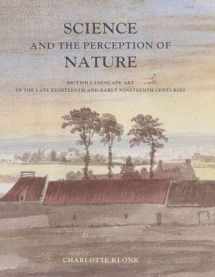
Science and the Perception of Nature: British Landscape Art in the Late Eighteenth and Early Nineteenth Centuries (The Paul Mellon Centre for Studies in British Art)
Book details
Summary
Description
This striking and innovative book opens up a new route into the study of British landscape art in the late eighteenth and early nineteenth centuries. Each chapter discusses an area in which art and science came into contact with one another: the role played by assumptions drawn from physiology in conditioning eighteenth-century aesthetic debates; Robert J. Thornton's grandly conceived book of botanical illustrations, The Temple of Flora; the interaction between artists and geologists in the exploration of the Scottish landscape; the influence of the artist-scientist Cornelius Varley on the circle of artists around his brother, John Varley, pioneers in the use of open-air sketching.
Charlotte Klonk's deeply researched accounts of the complex and often ambiguous interactions that took place between artists and scientists challenge simplistic accounts of developments in art as mere by-products of scientific progress as well as reductive socio-economic interpretations. For Klonk, the common thread running through the changes in both art and science is the emergence of a new phenomenalist conception of experience around the turn of the century. Phenomenalism involved a commitment to the scrupulous observation of particular phenomena, without making prior assumptions about meaning or underlying causes, and this ideal was common to both artists and scientists. In this way, Klonk argues, the period represents a brief moment of balance before the concerns of science and art split apart into objectivity and subjectivity, respectively.
Lavishly illustrated, and drawing on a wealth of unfamiliar material, both written and pictorial, this is a book that will make a distinctive contribution to art history. Its bold interpretation and interdisciplinary approach will also make it of great interest to anyone concerned with this crucial period in British cultural and intellectual history.


We would LOVE it if you could help us and other readers by reviewing the book
Book review



